

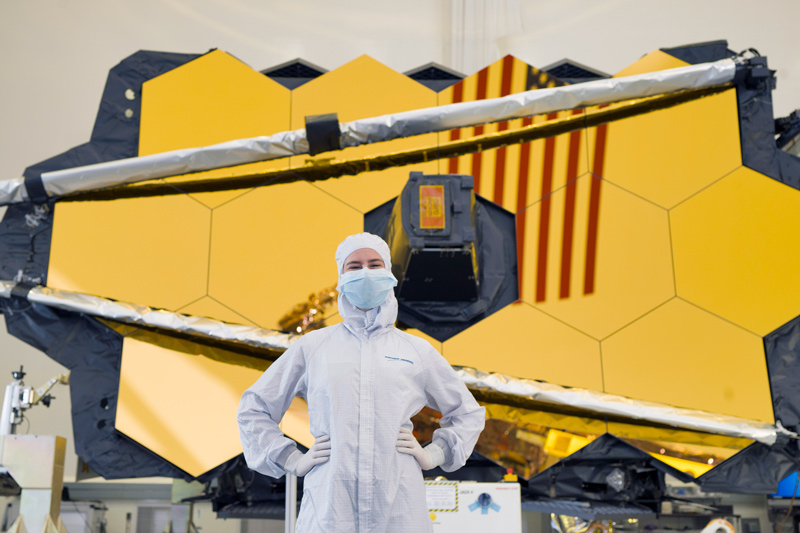
Gazing at galaxies
Photos by Kathy F. Atkinson and courtesy of Elaine Stewart and NASA December 23, 2021
UD engineering grad Elaine Stewart helped prepare the James Webb Space Telescope
Editor's note: This story was originally published on Dec. 23, two days before an international team successfully launched the James Webb Space Telescope.
Already it has traveled thousands of miles — by land and sea — to reach its launch site in Kourou, French Guiana. Now, the James Webb Space Telescope (JWST) is pointed toward the sky for a million-mile journey that scientists say could tell us more about the origins of the universe than has ever been possible before.
The launch of history’s largest and most powerful space observatory is set for 7:20 a.m. EST on Saturday, Dec. 25 — Christmas Day — though launches sometimes must be postponed and the JWST has had its share of delay.
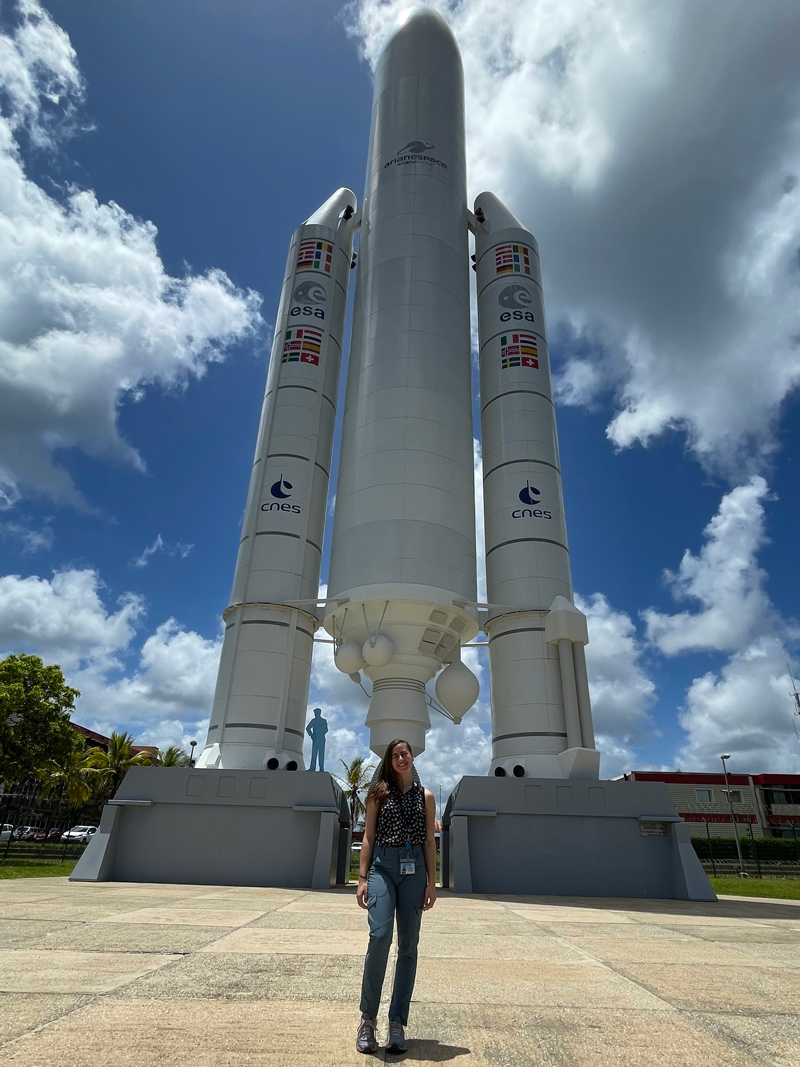
It’s among the most astonishing endeavors in human history — launching this exquisitely engineered telescope into areas where it is designed to capture treasure troves of data and images never before accessible. The collaborative effort includes the United States’ National Aeronautics and Space Agency (NASA), the European Space Agency (ESA) and the Canadian Space Agency (CSA). The French Guiana launch site is close to the equator, where the Earth’s surface rotational speed is greatest, giving the rocket a beneficial “slingshot effect.”
Among the many topics of research likely to expand significantly are the study of quasars, black holes, exoplanets (planets that orbit other stars), dark energy and primordial galaxies and other features of our universe’s earliest periods.
Thousands of scientists and engineers have been part of this two-decade project, which is named for a NASA administrator from the early 1960s.
And you could say that the fingerprints of University of Delaware graduate Elaine Stewart are all over this $10 billion instrument.
But you must not say that, please. Stewart’s hands-on duty as a NASA aerospace engineer has been to help prevent any and all contamination of the telescope — and that includes particulate, molecular and ice contamination.
Extraordinary technology and processes are required for the Webb telescope to capture the faint infrared radiation still detectable from the earliest stars and galaxies.
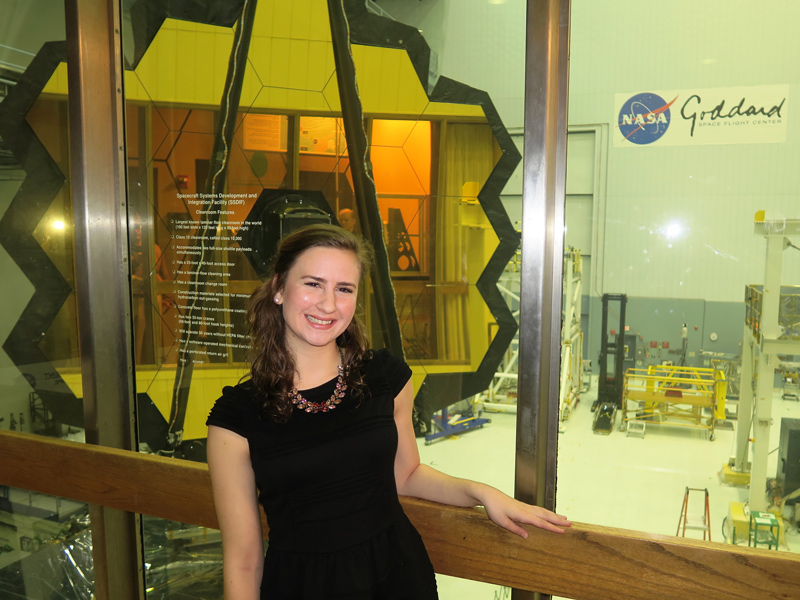
And all of the components must work well for the imaging and data collection to proceed as designed. Potential contaminants must be prevented.
The contamination engineering team includes physicists, biochemists and chemical engineers, Stewart said. She is in that latter group, having graduated from UD in 2019 with a degree in chemical engineering.
“Contamination engineers set the requirements for how clean the primary mirrors must be to accomplish the science,” she said. “We work on every step. It involves cleaning the hardware, with very specific procedures. We perform inspections in white lights and ultraviolet lights to see particulate contamination, such as dust, and molecular contamination, such as outgassing from component parts.”
Stewart has been part of this mission for five years, starting as a sophomore intern, with the support of the Delaware Space Grant Consortium. She was selected as a Pathways intern in 2016, which allowed her to work at Goddard Space Flight Center in Greenbelt, Maryland. She was assigned to the James Webb Space Telescope project, with Nobel Laureate John C. Mather, the Webb senior project scientist, among her mentors.
“I’ve had so many amazing experiences,” she said. “And every step of the way, everyone I worked with at NASA was willing to teach me and respected my thoughts.”
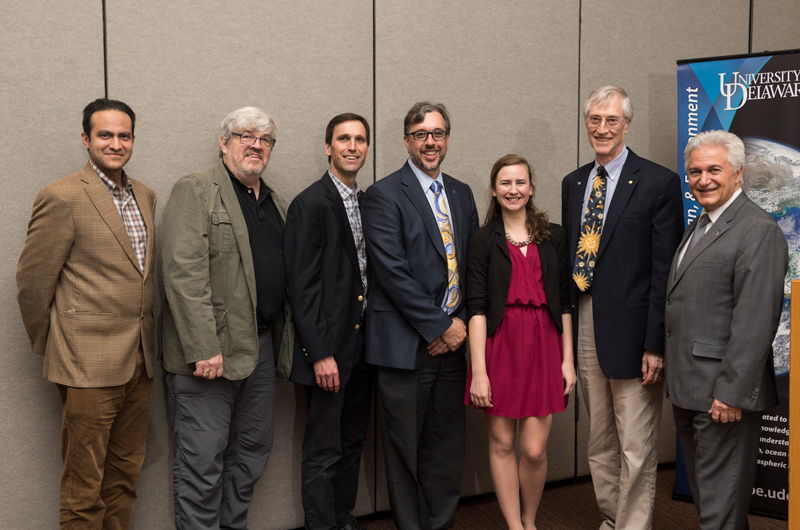
Stewart said her studies at UD set her up for success.
“I wouldn’t be at NASA if Delaware Space Grant hadn’t funded my first internship at the NASA Kennedy Space Center,” she said.
She pointed to UD mentors including John Gizis, professor of physics and astronomy, and Norman Wagner, Unidel Robert L. Pigford Chair in Chemical and Biomolecular Engineering.
“They gave me the engineering and experimental mindset,” she said.
Now she will be among the few on site to witness the launch of the Webb Space Telescope.
She knows there will be celebrations of the launch — and she will share in that. But her greatest joys will come when the telescope starts delivering data.
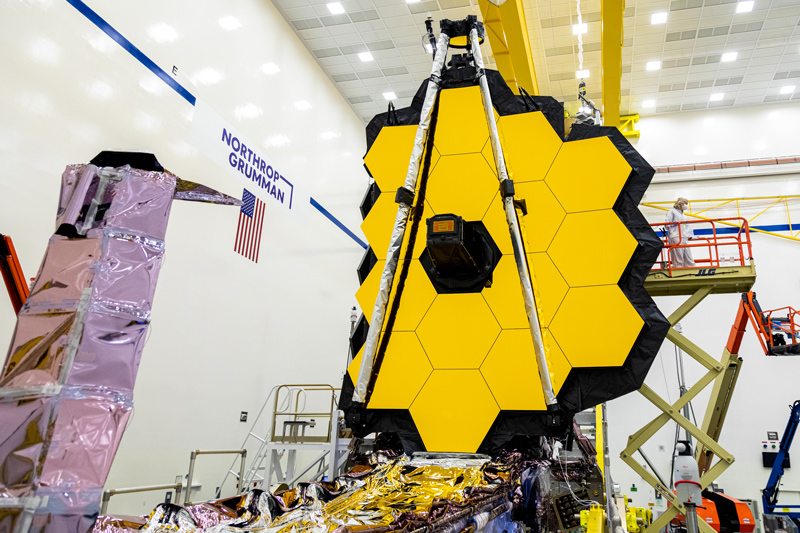
“It has to get 1 million miles away,” she said. “I will be celebrating the decades of innovations and scientific accomplishments that brought us to this historic launch. I will also be thinking, ‘What’s next? What’s next?’ I’m really looking forward to getting those first images back, and the NASA team will celebrate again!”
There are high hopes for the discoveries the telescope will make possible.
“Missions like the Hubble Telescope have been so successful,” she said. “We’re looking at different wavelengths of light here — infrared wavelengths, longer wavelengths than Hubble, with greatly improved sensitivities. We’ll be able to see some of the first galaxies, look into the dust clouds.
“There is a lot we don’t know. We don’t know how galaxies got black holes in the center of them, or how they were formed. We’re hoping Webb will help us learn.”
About the telescope
The telescope’s primary mirror has a diameter of just over 21 feet – far larger than any rocket could carry. Consequently, its design includes intricate origami-like folding sequences, enabling its packaging for transport and allowing it to unfurl to its fullest extent in space.
The telescope must operate in extreme cold to allow for detection of faint heat signals from distant objects. To do that, it must be protected from the heat of the sun, requiring an intricate sun shield that has five layers and opens up to about the size of a tennis court.
It also requires the sun’s energy to power its operations, and so includes a solar array.
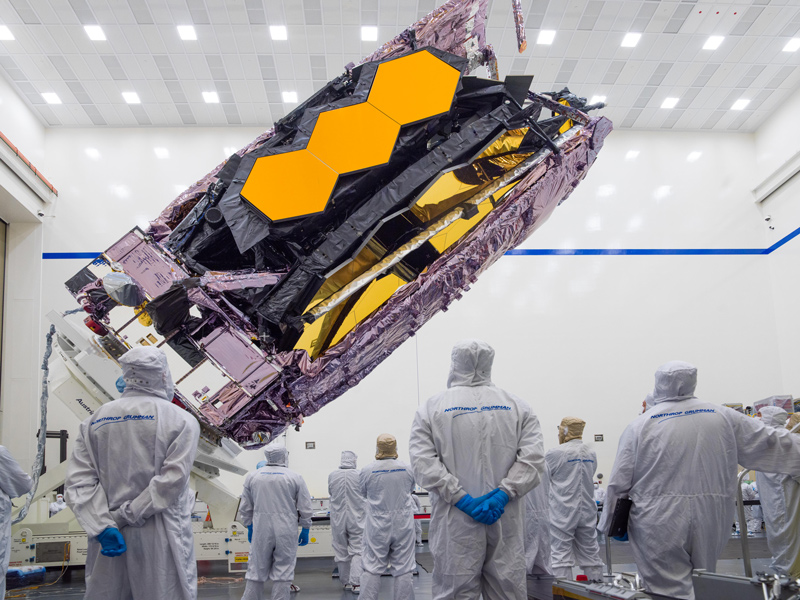
Four instruments are part of the package, including a Near Infrared Camera, a Near Infrared Spectrograph, a Mid Infrared instrument and a Near Infrared Imager and Slitless Spectrograph.
It will take about six months of deployment, unfolding and other calibrations and alignments before the Webb starts to capture data and images. Researchers hope to get the first images from Webb by mid-summer.
And then, who knows what we’ll learn? Many surprises are expected.
“Webb will look back over 13 billion years to the light created just after the big bang, with the power to show humanity the farthest reaches of space that we have ever seen,” NASA Administrator Bill Nelson said in a NASA release. “We are now very close to unlocking mysteries of the cosmos, thanks to the skills and expertise of our phenomenal team.”
An extraordinary experience
Stewart has spent the past two months in French Guiana, making a few brief trips back to Goddard during that period.
While she worked at the launch site, she continued working toward a master’s degree in space systems engineering, which she is pursuing at Johns Hopkins University.
“I’ve been lucky while working on my master’s to have this real-world experience to complement it,” she said. “I decided to take a class while I was here at the launch site. It’s a lot of work, especially with the variable schedule and the time changes. But I saw what I was learning in class being put into action here.”
It will be a bittersweet experience to see the Ariane 5 rocket carry the Webb Telescope away, she said.
“I’ve been able to witness launches before, but this is another experience entirely,” she said. “Knowing I have worked on this every day and now it’s going to leave — it’s sort of sad, but also so cool and I have been so fortunate. It has been a huge effort by NASA engineers and scientists, its international collaborators ESA and CSA and our contractors on so many different fronts.”
Watch the launch and read more about the JWST:
Live coverage of pre-launch events and the launch itself starts at 6 a.m. EST, Saturday, December 25) on NASA’s website, NASA TV and the NASA app, as well as these online sites: Facebook, Twitter, YouTube, Twitch and Daily Motion.
Video of telescope deployment sequence
Contact Us
Have a UDaily story idea?
Contact us at ocm@udel.edu
Members of the press
Contact us at 302-831-NEWS or visit the Media Relations website

